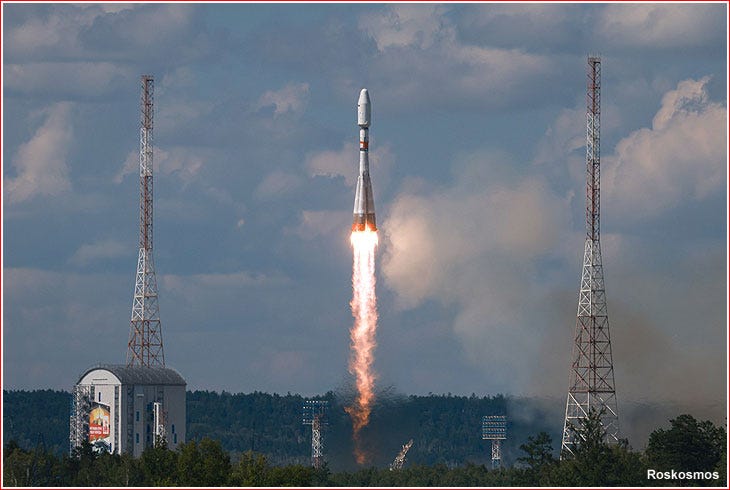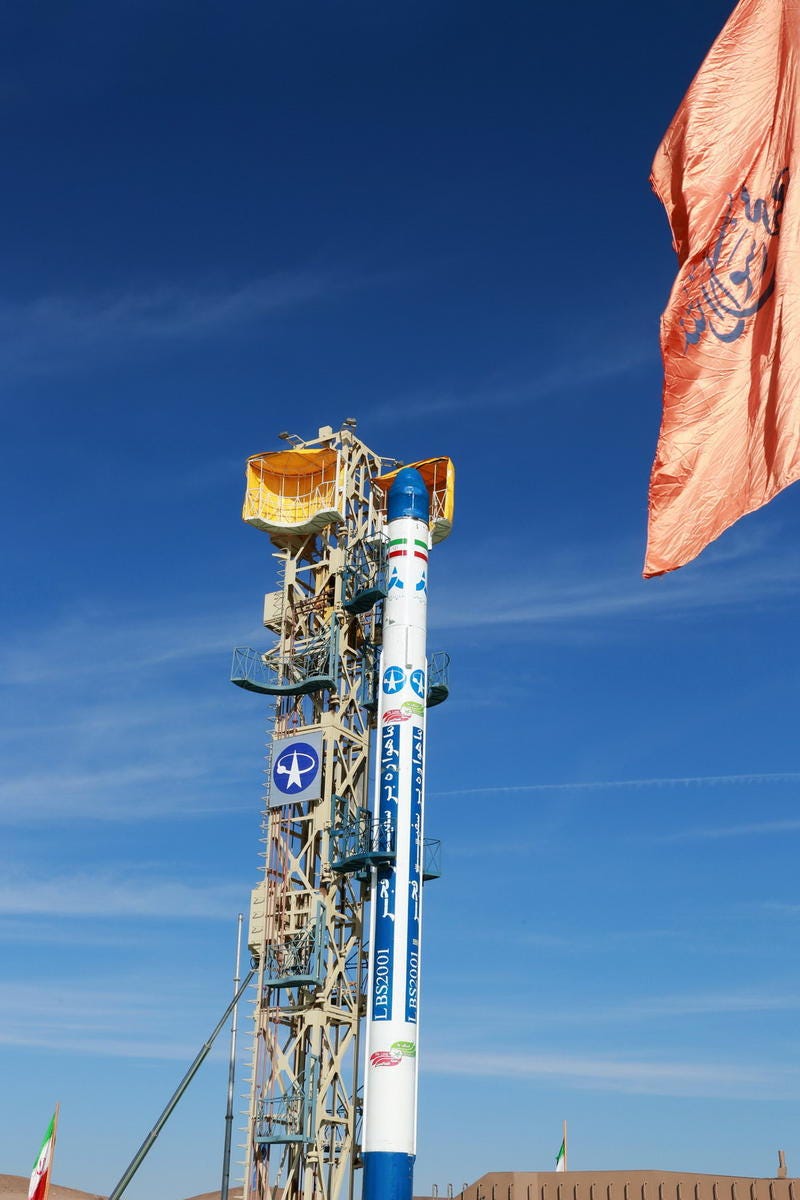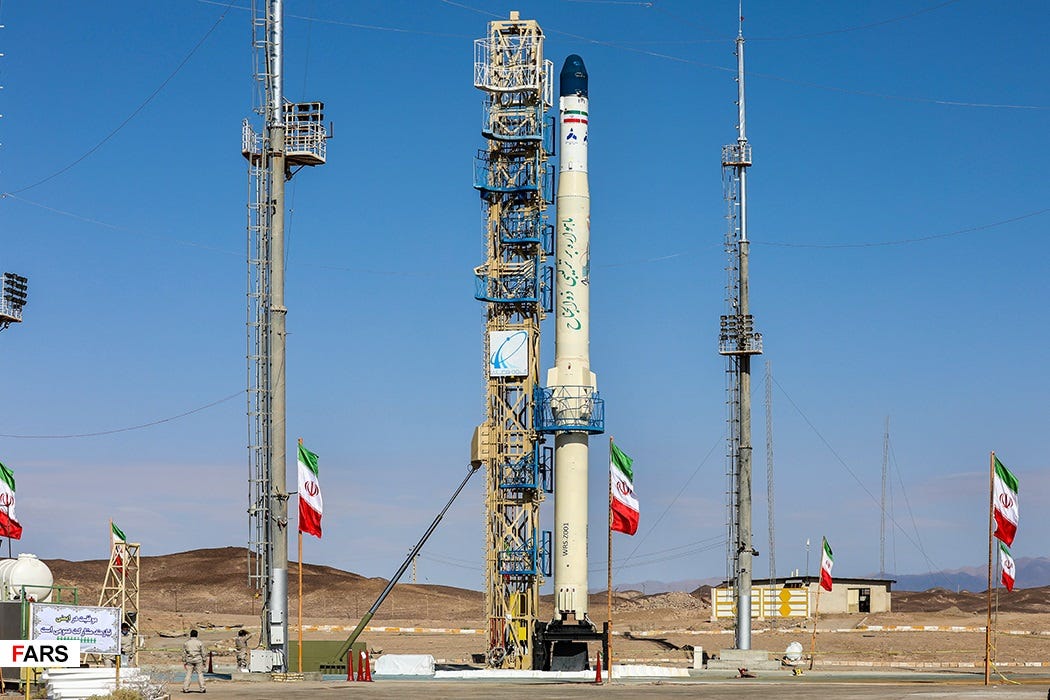Latest Satellite Launch Highlights Iran's Reliance On Russia To Place Larger Payloads Into Orbit, Ongoing Delays To Iran's Space Program
🇮🇷
On 25 July 2025, a Russian Soyuz Satellite Launch Vehicle (SLV) took off from the Vostochny Cosmodrome in Russia’s Far East. Among the payload carried by the Soyuz SLV was an Iranian communications satellite, which was placed into low Earth orbit (LEO) at a reported altitude of 500 kilometers. The satellite in question, the Nahid-2, is an Iranian-built communications satellite with a reported total mass of 120 kilograms. As things stand—and independent of the June 2025 Iran-Israel War—Iran is unable to reliably place even such a relatively small satellite into LEO, let alone beyond. As a result, Iran’s grand ambitions for its interrelated civilian and military space program(s) largely remain unfulfilled, and Iran is reliant on Russia to place larger, heavier, and more militarily useful satellites in orbit.
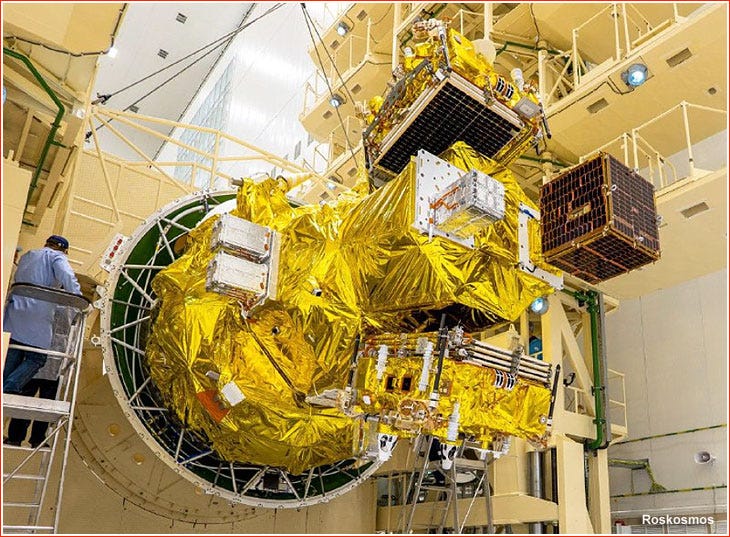
Despite over two decades of effort, Iran has only made eleven successful orbital satellite launch attempts, placing into LEO a total of just fourteen small satellites in the process. As the following chart highlights, Iranian launch attempts have been sporadic, and the country’s space launch efforts only took off in 2024, which is to say fifteen years after Iran successfully placed its first satellite in orbit.
The effects of the June 2025 Iran-Israel War—which included the targeting of industrial sites associated with the production of both liquid-propellant rocket engines and solid-fuelled rocket motors used on Iranian ballistic missiles and SLVs alike—are unclear, and Iran’s dual-use space launch program(s) may have been dealt a major blow that will result in further delays. While the Iran-Israel War offers a proximate explanation as to why Iran may be unable to reliably place even small satellites into LEO, let alone beyond, over the coming years, Iran’s reliance on Russia to place larger satellites into the higher bands of LEO is reflective of longstanding dynamics and Iran’s continued inability to realize its ambitions in space despite years of sustained effort.
A Brief History of Iranian Satellite Launch Vehicles
Although the origins of its space program remain unclear, Iran has been pursuing an independent space launch and satellite design capability for over two decades. In 2004, Iran formally established the Iranian Space Agency (ISA) and began adapting its then recent breakthroughs in long(er)-range ballistic missile technology toward a civilian space program. In 2008, Iran began suborbital tests of an SLV with a first stage derived from the liquid-propellant Shahab-3/Ghadr long-range ballistic missile that was later unveiled as the Safir. In February 2009, a Safir SLV placed Iran’s first satellite into orbit.
Much like the Soviet Union’s Cold War-era Sputnik satellite, Iran’s first satellite, the 27-kilogram Omid, was a technical achievement but had very little practical value for either civilian or military purposes. The small size of the Omid reflected Iran’s limited satellite design and manufacturing capacity as well as the fact that the two-stage Safir SLV was incapable of placing substantially larger or more useful payloads into LEO, let alone beyond. The outdated liquid-propellant first-stage used on the Safir, which was derived from the 1960s-origin technology found on Soviet R-17 Elbrus “Scud” ballistic missiles by way of North Korea, offered little scope for performance growth, making it an evolutionary dead end. Iran, therefore, began to develop the Simorgh, an SLV built around a cluster of four liquid-propellant rocket engines derived from the Shahab-3/Ghadr for its first stage.
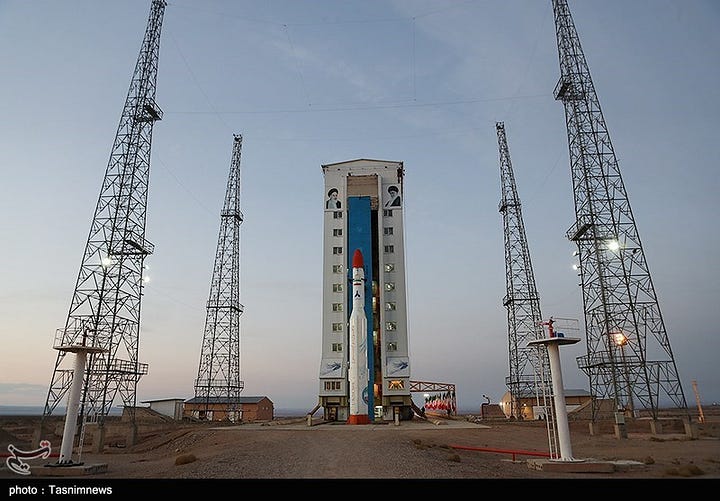
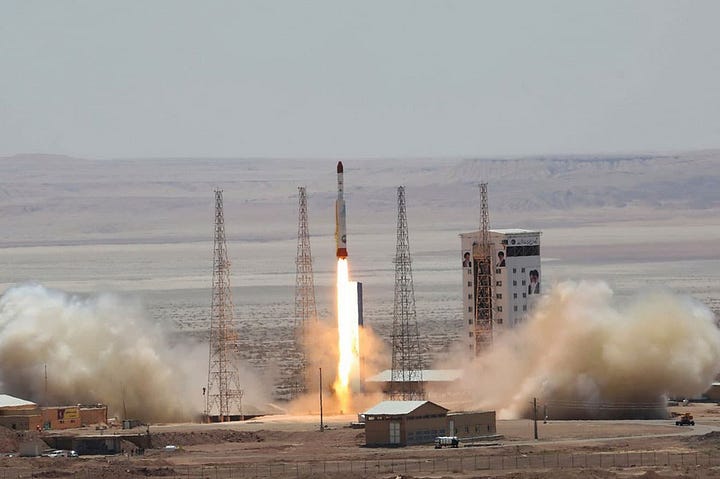
At the time of its unveiling in 2010, the Simorgh SLV appeared to offer Iran’s space program a path toward placing larger and more useful satellites, whether civilian or military, into orbit. The development of the Simorgh SLV was, however, beset by technical challenges. While a Simorgh SLV undertook a successful suborbital flight in 2016, it proved to be an unreliable design, with all known orbital launch attempts failing between 2017 and 2024. Following years of troubleshooting, Iran conducted its first successful Simorgh SLV orbital launch in January 2024 and conducted the second-ever successful Simorgh SLV orbital launch in December 2024. A February 2025 orbital launch with what is reported to be an experimental payload and a very different orbital target did, however, fail. As of late July 2025, there have been no reports of additional Simorgh SLV launch attempts.
Notwithstanding the two breakthrough successes of the Simorgh SLV in 2024, Iran’s space program appeared to be in trouble by the turn of the decade. At the time, it looked like neither the Safir SLV nor the Simorgh SLVs were likely to offer Iran a reliable and militarily useful space-launch capability. Iran had, after all, spent years regularly announcing new satellite projects that it could not independently place into orbit, all in a context in which international sanctions and diplomatic dynamics more generally essentially cut Iran off from commercial space launch services. While Iran had the option of outsourcing its satellite launches to Russia and perhaps China by the mid-2010s, Iranian decision-makers were hesitant to become wholly dependent on either of these highly self-interested and highly transactional countries that had exhibited little hesitation in treating their bilateral ties with Iran as a bargaining chip with the United States and other countries. Iran, therefore, doubled down on developing its indigenous and sovereign space launch capabilities, and the results became public knowledge from 2020 onward.
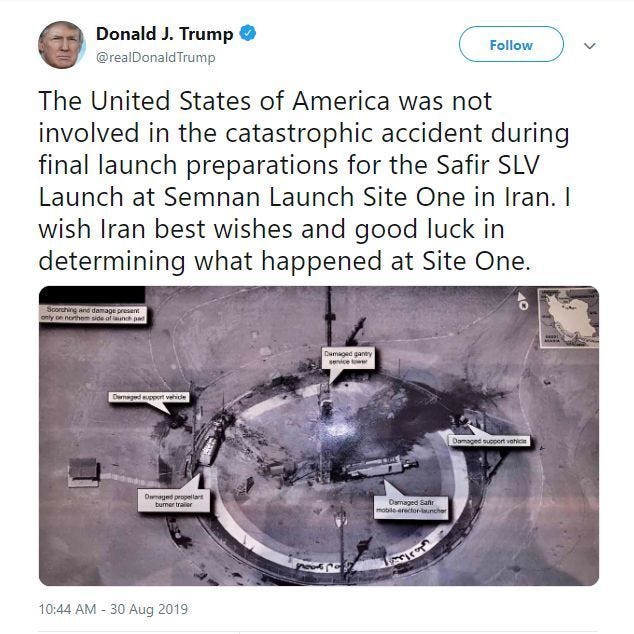
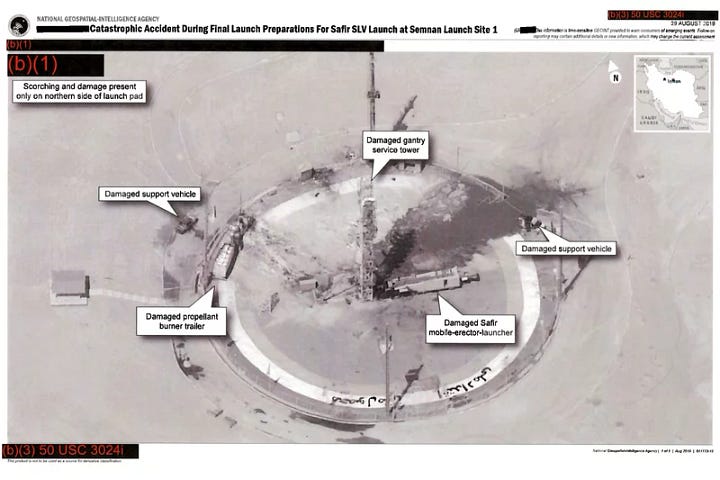
In April 2020, Iran unexpectedly announced that the Islamic Revolutionary Guard Corps (IRGC)—and not the ISA—had placed a military imaging satellite, the Noor-1, into orbit using a new, previously unknown three-stage SLV developed by the IRGC’s Self-Sufficiency Jihad Organization (SSJO), the Qased. While the Qased SLV, like the Safir SLV and Simorgh SLV, used the outdated but functional and readily available liquid-propellant rocket engine from the Shahab-3/Ghadr ballistic missile for its first stage, it used new IRGC SSJO-developed solid-propellant rocket motors for its second and third stages. As of this writing in late July 2025, the Qased SLV has been used in three known orbital launch attempts in 2020, 2022, and 2023, all of which successfully placed small and light—CubeSat class—military imaging satellites into LEO. Iran notably undertook a suborbital experimental launch of a Qased SLV on 21 July 2025. This is the first publicly known launch of an Iranian ballistic missile or SLV launch since the formal end of the June 2025 Iran-Israel War.
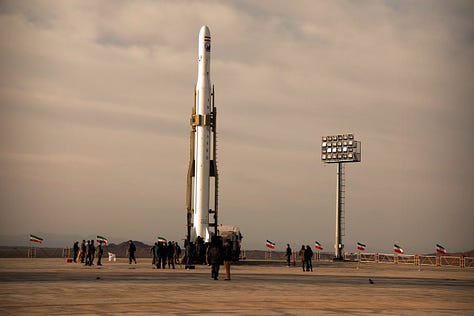
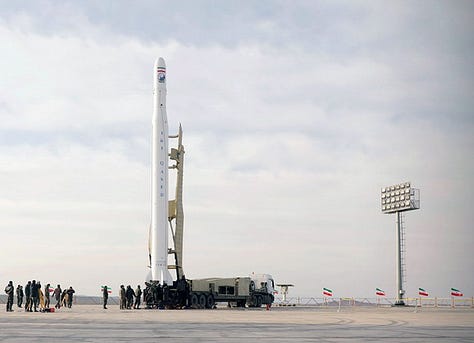
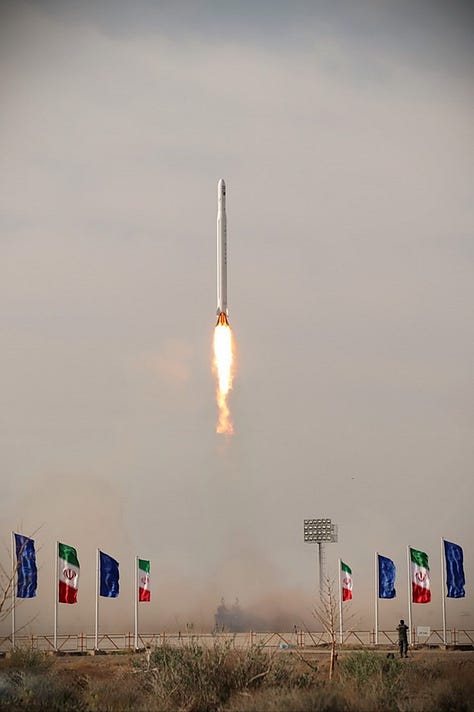
Building off the surprise breakthrough in Iranian solid-propellant rocket motor technology that was unveiled in the form of the Qased SLV, in November 2022, Iran undertook a suborbital test of a related new SLV design, the Qaem-100, which was notably also developed and operated by the IRGC’s SSJO and not the ISA. Whereas the Qased SLV is equipped with a liquid-propellant first stage in the same manner as the Safir SLV and Simorgh SLV, the Qaem-100 SLV employs a new solid-propellant first stage, thereby making it an exclusively solid-propellant SLV and, as such, an SLV design with far greater practical military applications and implications—for use in a longer-range ballistic missile—than either the Safir SLV or the Simorgh SLV. As of late July 2025, the Qaem-100 SLV has been launched in a successful suborbital test flight in 2022, an unsuccessful orbital launch attempt in 2023, and two successful orbital launches in 2024, which were used to place an imaging satellite as well as an experimental technology demonstrator satellite into LEO.
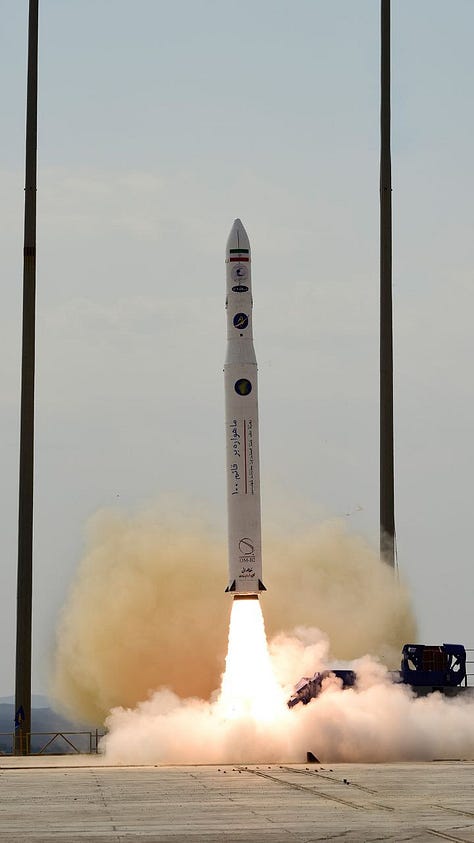
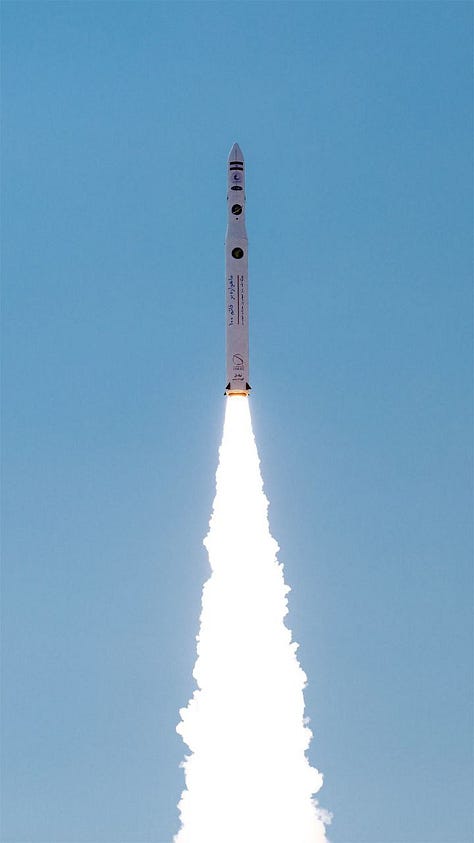
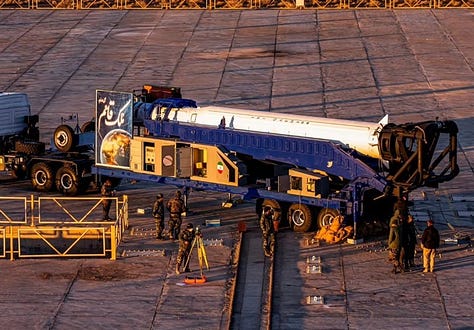
The unveiling of the Qased SLV and Qaem-100 SLV received considerable international attention, not least because both these SLVs were developed and are operated by the IRGC’ SSJO and not the ISA, meaning that Iran has parallel space-launch and satellite programs. While the extent to which the ISA and IRGC’s SSJO share technology, expertise and industrial capacity is unclear, there are indications that the IRGC, which operates Iran’s ballistic missiles, is undertaking an independent technology development which, as previously noted, has far greater practical military applications and implications than preceding Iranian SLV designs. Attesting to the apparent absence of coordination between the ISA and the IRGC’s SSJO, in February 2021, Iran unveiled the Zoljanah, a new three-stage SLV design with a solid-propellant first and second stages that appears to be a partial replacement for the ISA’s unsuccessful liquid-propellant Simorgh SLV. As of this writing in late July 2025, the ISA’s Zoljanah SLV is understood to have only undertaken two suborbital test flights—in 2021 and 2022—and no orbital launch attempts, which is to say that the ISA’s Zoljanah SLV seemingly remains in development and is not operational.
Iran’s Qased SLV and Qaem-100 SLV, as well as the refined Simorgh SLV version(s) used in the only two successful orbital launch attempts using that cumbersome SLV design, have provided Iran’s civilian and military space programs a renewed lease of life to move beyond the decade plus of disappointment that followed the placement of the Omid, Iran’s first satellite, into LEO. That said, the satellites that Iran has independently placed into (low Earth) orbit to date are small and light designs, and Iran’s operational SLVs other than the unreliable Simorgh SLV are unsuited to placing more meaningful payloads to the higher bands of LEO. Furthermore, Iran’s operational SLVs are limited in terms of the payload fairing diameter, which restricts the dimensions of the satellites that Iran can independently place into orbit.
The Qased SLV, for example, has been used to place three CubeSat-class imaging satellites in orbit (in three successful orbital launches). The largest of the three satellites, the Noor-3, has a reported mass of just 24 kilograms. As a result of this very small size, the Noor satellites are equipped with small and light low-end imaging sensors that can only capture low-resolution imagery. Because these satellites are so small and light, it is not practical to install an onboard power source to counteract orbital decay in LEO. As a result, these small and light Iranian satellites have a short service life that amounts to a waste of a fairly expensive SLV such as the Qased. While CubeSat-class imaging satellites are very popular worldwide, these are primarily economical to place into LEO when there is an opportunity for placement as a secondary—in practice often tertiary—payload on a large payload SLV such as the Russian Soyuz that is primarily paid for by other customers.
The Nahid-2 communications satellite, which was launched by a Russian Soyuz SLV in July 2025, was placed into LEO as a secondary payload. Despite having a mass of just 110 kilograms and being placed into LEO at an altitude of 500 kilometers, Iran was unable to independently launch the Nahid-2 in the absence of a reliable refined version of the troubled Simorgh SLV. Satellites are not inexpensive, and Iran cannot afford to risk losing satellite payloads to an unreliable SLV. For context, consider that the January 2024 Qaem-100 SLV launch placed the 50-kilogram Sorya satellite into LEO at an altitude of 750 kilometers while the September 2024 Qaem-100 SLV launch placed the 60-kilogram Chamran-1 satellite into LEO at an altitude of 550 kilometers.
Iranian decision-makers and engineers are well aware of the limitations of the country’s currently operational SLV designs. While the IRGC SSJO’s Qaem-100 offer a greater payload capacity than its smaller Qased, the payload fairing diameter remains the same. Although the ISA’s Zoljanah SLV has a larger diameter payload fairing and greater payload capacity, it has not undertaken a successful launch attempt since its first suborbital test flight in January 2021. Iran’s ambitions in space, therefore, remain dependent on the still unreliable Simorgh SLV.
In recognition of the limitations of the aforementioned Iranian SLV designs, Iran’s two parallel space programs have set ambitious targets that have not yet been realized. The ISA has previously announced grand plans to develop much larger and more powerful SLVs designated the Sarir, Soroush-1, and Soroush-2 so as to offer Iran a sovereign means of placing large and heavy satellites in geostationary orbit (GEO), which is to say an orbital altitude of around 36,000 kilometers. In so doing, Iran will be able to independently place communications satellites into GEO—communications satellites that will, among other things, offer the Iranian military reliable access to a sovereign beyond-line-of-sight communication capability.
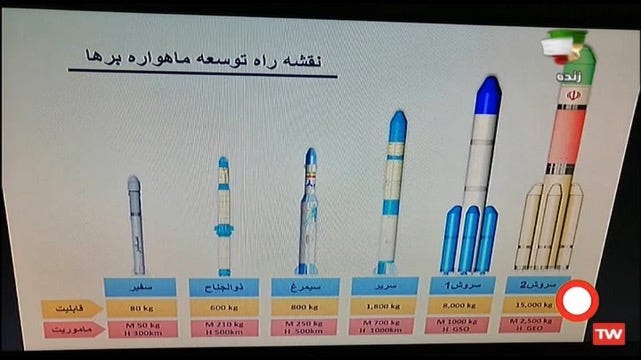
The IRGC’s SSJO, meanwhile, has announced plans to build upon the success of the Qaem-100 with the introduction of an as-yet veiled higher payload SLV designated the Qaem-105. In so doing, the IRGC’s SSJO will also develop an SLV with far greater practical military applications and implications. Unlike the ISA’s future SLV designs, the IRGC’s SSJO is likely to continue down the path of developing solid-propellant SLV designs that have far greater practical military applications and implications—for use in a longer-range ballistic missile. This development trajectory is, of course, at a greater risk of being curtailed by Iranian decision-makers due to concerns about military and diplomatic sensitivities, not least in the aftermath of the Iran-Israel War.
While the July 2025 placement of the Nahid-2 satellite by a Russian Soyuz SLV draws attention to Iran’s reliance on Russia to place larger and heavier satellites into the higher bands of LEO, it is important to note that Iran also remains limited in terms of its ability to design and manufacture militarily useful satellites, independent of its ability to place said satellites in orbit. This is underscored by the fact that the most capable Iranian-owned satellite currently in operation, the Khayyam, is Russian-built and was placed into orbit using a Russian Soyuz SLV in August 2022. The Khayyam is a dual-use imaging satellite, which reportedly offers a resolution of one meter, has a mass of 600 kilograms, and is situated at an orbital altitude of 500 kilometers. Not only was Iran incapable of independently designing and building such a satellite—which could have still been placed into orbit using a Russian Soyuz SLV—but Iran could not have placed the Khayyam satellite or its hypothetical Iranian equivalent into orbit even if the Simorgh SLV were a proven and reliable design.
In February 2024, Iran marked the fifteenth anniversary of the successful placement into orbit of the Omid satellite. Even with a record four successful orbital satellite launch attempts in 2024, which placed a total of eight small satellites into LEO, Iran’s space program had a long way before the country can place militarily useful satellites into LEO, let alone beyond, and do so in a consistent manner. Iran’s grand ambitions for its interrelated civilian and military space program(s) largely remain unfulfilled, and Iran is reliant on Russia to place larger, heavier, and more militarily useful satellites in orbit. Short of major breakthroughs in Iranian SLV development, Iran is, as such, likely to turn to the Russian Soyuz SLV to place larger and heavier satellites into higher altitude orbits for the foreseeable future.


